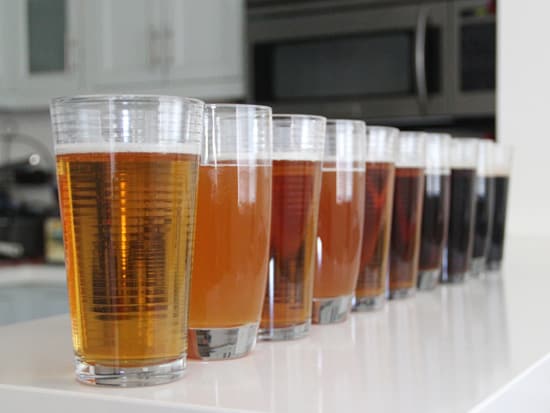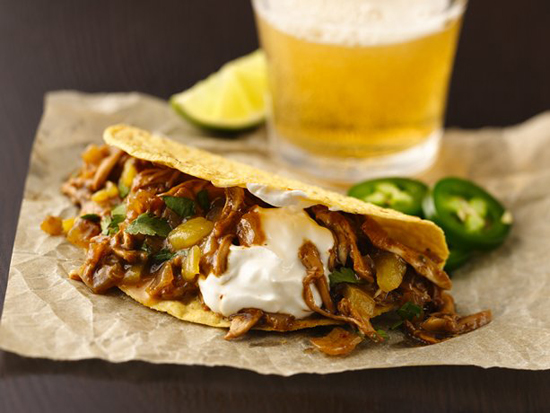(function() {
document.addEventListener('DOMContentLoaded', function() {
var componentMetadata = JSON.parse('\x7b\x22componentName\x22\x3a\x22ChannelLinks_8918a218-1030-4c2b-87de-605f1d7de656\x22,\x22deferOptions\x22\x3a\x7b\x22deferComponent\x22\x3afalse,\x22deferType\x22\x3a\x22None\x22,\x22deferId\x22\x3a\x22re78b7da56ec44adcadc831c85e8a99ff\x22,\x22deferredContainerId\x22\x3a\x22\x2fchannelLinks\x22,\x22deferredContainerView\x22\x3anull\x7d,\x22viewName\x22\x3a\x22ChannelLinks\x22\x7d');
var configuration = {};
var moduleName = 'channelLinks';
var isVueModule = true;
GeneralMills.PandoSites.RegisterControlInstance(moduleName, configuration, componentMetadata, isVueModule)
});
})();
(function() {
document.addEventListener('DOMContentLoaded', function() {
var componentMetadata = JSON.parse('\x7b\x22componentName\x22\x3a\x22ActionToolbar_59e5fa31-dc57-46ea-93d1-265650a760f0\x22,\x22deferOptions\x22\x3a\x7b\x22deferComponent\x22\x3atrue,\x22deferType\x22\x3a\x22OnDemand\x22,\x22deferId\x22\x3a\x22rc16dbf183f754b279f024e36c1fdd066\x22,\x22deferredContainerId\x22\x3a\x22\x2ffloatingActionToolbar\x2ffloatingActionToolbar_interop\x22,\x22deferredContainerView\x22\x3a\x22InteropDeferWrapper\x22\x7d,\x22viewName\x22\x3a\x22ActionToolbar\x22\x7d');
var configuration = {"contentId":"a3fd99d8-a1d4-4e30-9f57-afe6cddab0f9","toolbarSettings":{"id":"59e5fa31-dc57-46ea-93d1-265650a760f0","regAction":"FAVORITE","eSourceCode":11275,"namePassedToEvents":"ArticleStandardLongFormToolbar","buttons":[{"addFavoriteErrorMessage":"Sorry, something went wrong. Please save again.","removeFavoriteErrorMessage":"Error occurred while removing from favorites","regAction":"FAVORITE","eSourceCode":11275,"isCurrentUserAnonymous":false,"isFavoriteItem":false,"id":"16a29701-2b75-4d9a-aa9c-860376da50d7","allowedForAnonymousUsers":false,"type":"Favorite","displayName":"Save","namePassedToEvents":"Favorite","cssClassName":"atButtonFavorite","privacyOptOutMessage":"\u003cdiv class=\u0027privacyMessage\u0027\u003e\n\u003ch3\u003eThis feature is not available with your current cookie settings.\u003c/h3\u003e\n\u003cp\u003eYou can \u003ca href=\u0027#\u0027 data-show-preference-center=\u00271\u0027\u003eupdate your privacy settings\u003c/a\u003e to enable this content. Please enable “Functional Cookies” to use this feature.\u003c/p\u003e\n\u003c/div\u003e","showPrivacyOptOutMessage":false},{"providerName":"pinterest","providerNamePassedToEvents":"Pinterest","shareUrlFormat":"//pinterest.com/pin/create/link/?url={0}","id":"c18cf08e-e436-4cd0-a180-1bafb15369a6","allowedForAnonymousUsers":true,"type":"Social","displayName":"Pinterest","namePassedToEvents":"Pinterest","cssClassName":"atButtonPinterest","privacyOptOutMessage":"\u003cdiv class=\u0027privacyMessage\u0027\u003e\n\u003ch3\u003eThis feature is not available with your current cookie settings.\u003c/h3\u003e\n\u003cp\u003eYou can \u003ca href=\u0027#\u0027 data-show-preference-center=\u00271\u0027\u003eupdate your privacy settings\u003c/a\u003e to enable this content. Please enable “Functional Cookies” to use this feature.\u003c/p\u003e\n\u003c/div\u003e","showPrivacyOptOutMessage":false},{"templateId":"13bdd311-4300-4fb8-9d78-9cbaf98f5578","dialogHeading":"Email Article","emailCode":"BC_ContentEmail","dialogSettings":{"cancelButtonText":"Cancel","copyToSenderLabel":"Send a Copy to Myself","emailAddressesLabel":"* Email Address(es)","emailInstructionText":"Separate email addresses with commas","fromText":"From:","privacyPolicyText":"\u003cp\u003e\u0026copy;2024 General Mills, Inc. All Rights Reserved. This information will only be used to send an email to your friend(s) and will not be saved. Please read our \u003ca rel=\u0022noopener noreferrer\u0022 rel=\u0022noopener noreferrer\u0022 href=\u0022http://www.generalmills.com/company/privacy-policies/privacy-policy-us\u0022 target=\u0022_blank\u0022 shape=\u0022rect\u0022\u003ePrivacy Policy\u003c/a\u003e.\u003c/p\u003e","requiredFieldText":"* Required","sendButtonText":"Send","senderEmailAddressLabel":"* Your Email Address","senderFirstNameLabel":"* Your First Name","sendToText":"Send To:"},"id":"be9422a3-85a8-4c31-86f5-e171255bb89d","allowedForAnonymousUsers":true,"type":"Email","displayName":"Email","namePassedToEvents":"Email","cssClassName":"atButtonEmail","privacyOptOutMessage":"\u003cdiv class=\u0027privacyMessage\u0027\u003e\n\u003ch3\u003eThis feature is not available with your current cookie settings.\u003c/h3\u003e\n\u003cp\u003eYou can \u003ca href=\u0027#\u0027 data-show-preference-center=\u00271\u0027\u003eupdate your privacy settings\u003c/a\u003e to enable this content. Please enable “Functional Cookies” to use this feature.\u003c/p\u003e\n\u003c/div\u003e","showPrivacyOptOutMessage":false},{"providerName":"facebook","providerNamePassedToEvents":"Facebook","shareUrlFormat":"//facebook.com/sharer/sharer.php?u={0}","id":"6c3f442d-6ffe-460f-8360-b02b122d326c","allowedForAnonymousUsers":true,"type":"Social","displayName":"Facebook","namePassedToEvents":"Facebook","cssClassName":"atButtonFacebook","privacyOptOutMessage":"\u003cdiv class=\u0027privacyMessage\u0027\u003e\n\u003ch3\u003eThis feature is not available with your current cookie settings.\u003c/h3\u003e\n\u003cp\u003eYou can \u003ca href=\u0027#\u0027 data-show-preference-center=\u00271\u0027\u003eupdate your privacy settings\u003c/a\u003e to enable this content. Please enable “Functional Cookies” to use this feature.\u003c/p\u003e\n\u003c/div\u003e","showPrivacyOptOutMessage":false},{"layoutParameter":"p%3d1","id":"de022929-4416-4bc9-ab3c-ae5711d562bf","allowedForAnonymousUsers":true,"type":"Print","displayName":"Print","namePassedToEvents":"Print","cssClassName":"atButtonPrint","privacyOptOutMessage":"\u003cdiv class=\u0027privacyMessage\u0027\u003e\n\u003ch3\u003eThis feature is not available with your current cookie settings.\u003c/h3\u003e\n\u003cp\u003eYou can \u003ca href=\u0027#\u0027 data-show-preference-center=\u00271\u0027\u003eupdate your privacy settings\u003c/a\u003e to enable this content. Please enable “Functional Cookies” to use this feature.\u003c/p\u003e\n\u003c/div\u003e","showPrivacyOptOutMessage":false}],"isSticky":true},"userSettings":{"isCurrentUserAnonymous":true,"isFavoriteItem":false},"pageAttributes":{"url":"https%3a%2f%2fwww.bettycrocker.com%2fHow-To%2fTipsLibrary%2fEntertaining%2fBeer-Pairings","contentId":"a3fd99d8-a1d4-4e30-9f57-afe6cddab0f9"},"recaptchaPublicKey":"6LfU_icUAAAAALSqSjRg5hqZwbPr1b8k-_80a_S_"};
var moduleName = 'actionToolbar';
var isVueModule = true;
GeneralMills.PandoSites.RegisterControlInstance(moduleName, configuration, componentMetadata, isVueModule)
});
})();
I’m a beer man. Give me a choice between a glass of beer or a glass of wine at dinner and I’ll reach for the beer every time.
Fortunately, this preference doesn’t make me an unsophisticated lout. Quite the contrary. As the craft brewing industry has exploded, more and more beer types reach a larger and larger audience. While decades ago Americans were mainly exposed to only pale lagers, now most of us can at least say we’ve heard words like “stout,” “India pale ale” and “pilsner.”
This variety of styles is great for our palates but it can also lead to confusion, especially when thinking about pairing beer with a specific dish. I may have sophisticated taste when it comes to beer (I’m drawn to the hoppy bitterness of IPAs) but my method for matching beers and foods is as unsophisticated as it gets: I open my fridge and reach for whatever is closest.

But, that has come to an end. I set out to sharpen my beer and food pairing skills. This is what I learned.
First, a quick beer primer
The basic beer recipe consists of just four ingredients: water, a starch source (usually malted barley), yeast and hops. Brewers get sugar by mixing the barley with water. The sweet liquid is boiled and hops (a type of dried flower) are added to give bitterness, flavor, and to help preserve the beer. Add yeast and the mixture ferments, producing alcohol.
Beer can be divided into two main types: ales and lagers. They use different types of yeast for the fermentation process and are brewed at different temperatures. Ales are brewed between 60 and 75ºF and in general have more flavor and body than lagers. Lagers are brewed between 45 and 55ºF and then have a secondary fermentation at temperatures just above freezing. This results in beers that are crisper and cleaner than ales.
Within each category, there are a huge variety of types of beer to choose. Now the fun part.
Decisions, decisions
Before we get into the nitty gritty, let’s talk generally about pairing beer and food. It helps to decide up front if you are going to complement or contrast your dish with your beer.
I’ve found that I think in terms of contrasts when it comes to flavors, beers with less intense flavors and lower alcohol pair best with lighter foods. More intense beers pair best with heavier foods.
At the same time, I think in terms of think of similarities when it comes to the physical properties of the beer:
- Lighter in color and less alcoholic beers pair best with lighter foods.
- Heavier beers pair best with heavier foods .
When in doubt, think about the order of the meal:
- Lighter beers typically go better with salads, fish and chicken.
- Darker beers go better with heavier pasta dishes and beef.
- A chocolate porter is the perfect companion to a rich chocolate cake.
There it is. My 3 simple rules of thumb to pair beer with food. I selected 10 beers (eight ales and two lagers) that cover the beer taste and color spectrum and paired them with at least one dish from the Betty Crocker Kitchens. Enjoy both!

Pilsner: This lager style is light, crisp and clean, with a dry finish.
Pairs with: Bratwurst, if you’re going classic. Pilsner is also great for cutting through the spiciness of Mexican and Thai dishes. Chicken tacos is an excellent pairing.
Witbier: Often called “white beer” because of the hazy color from floating yeast and wheat proteins. This ale is traditionally flavored with spices and citrus peel.
Pairs with: Summer salads. To experiment with complimentary flavors, try making a salad with avocados, oranges and pine nuts on a bed of arugula or this Crispy Prosciutto and Orange Salad.
India Pale Ale: IPAs get their name from their popularity with traders in the East India Company back in the 18th and 19th centuries. This type of beer has more hops for a notable strong and bitter (yet not unpleasant) taste.
Pairs with: Pizza. A strong IPA is perfect for cutting through the grease and fat of a delicious cheesy pizza pie.
Hefeweizen: The most well-known style of wheat beer has very little bitterness. It is citrusy, refreshing and slightly sweet, and not as dry as a pilsner.
Pairs with: Roast chicken and sushi. At one of my favorite restaurants the chef served a lemon zest-rubbed chicken. I always ordered a hefeweizen as a complimentary beer.
Pale ale: This beer got its name because it is brewed with pale malt. Pale ales are often amber in color and not necessarily a “mild” beer, with a robust and full flavor.
Pairs with: A hamburger is a classic and perfect pairing.
American Lager: Pale lagers have a similar flavor profile to pilsners, while not having quite as dry a finish. Darker lagers have more caramel notes.
Pairs with: Seafood; darker lager is a great compliment to salmon.
Amber ale: Amber ales have great balance. They are smooth, slightly sweet and warm, while having a bit of bite from the hops.
Pairs with: Fish and chips. One of the best meals I ever had was an amber ale and a pile of fried fish and french fries on Fisherman’s Warf in San Francisco. I had to order another beer.
Brown ale: Traditionally an English beer, a brown ale has nutty and caramel notes with a smooth finish.
Pairs with: Think England in the winter (or summer, for that matter). We’re talking warmer, heavier dishes, like chicken pot pie.
Porter: This beer got its name because, yes, it was popular with porters in 18th century England. Flavors of coffee, chocolate and smoke are most common.
Pairs with: Beef stew and chili. Adding a bottle of porter while cooking your pot of chili is a great way to enhance the finished dish because the flavors (coffee, chocolate, smoke) work so well together.
Stout: Irish stouts are traditionally smoother than porters, with a lower alcohol content. Imperial stouts might have a similar color, but they are much stronger with more alcohol.
Pairs with: Barbeque. A plate of ribs in front of you and a stout in your hand is a great place to be. A stout float is also a fantastic quick dessert. Simply add a couple scoops of vanilla ice cream to your favorite stout.
(function() {
document.addEventListener('DOMContentLoaded', function() {
var componentMetadata = JSON.parse('\x7b\x22componentName\x22\x3a\x22NewsletterCTA_b9911a56-3a0d-4b1c-8521-df6c10ce048a\x22,\x22deferOptions\x22\x3a\x7b\x22deferComponent\x22\x3atrue,\x22deferType\x22\x3a\x22OnDemand\x22,\x22deferId\x22\x3a\x22r1bb08342fe744fc49b8d625d4d166f85\x22,\x22deferredContainerId\x22\x3a\x22\x2fprimaryColumn\x2finteropInlineNewsletterCta\x22,\x22deferredContainerView\x22\x3a\x22InteropDeferWrapper\x22\x7d,\x22viewName\x22\x3a\x22NewsletterCTA\x22\x7d');
var configuration = {"unsubscribedNewsletters":[{"listId":"1e34a555-89d1-45f0-8f07-b3ae6b01c03c","thumbnailImageUrl":"/-/media/GMI/Core-Sites/BC/Images/Shared/myaccount/newsletters/BC_Thumb157x157.png?sc_lang=en","previewUrl":"https://morpheus3.idpk.net/email_sends/9111/preview","name":"Betty\u0027s Email","isPromo":false}],"settings":{"anonymousCopy":"Ready to Be Inspired?","anonymousDescriptionCopy":"We know you’ll love our daily tips, trends and tasty recipes sent right to your inbox.","anonymousThankYouCopy":"\u003cp\u003eThanks! Your first email is on its way.\u003c/p\u003e\n","anonymousThankYouDescriptionCopy":"\u003cp\u003e\u003cspan\u003eNow that you\u0026rsquo;re signed up, create an account on BettyCrocker.com to save your favorite recipes, learn more about special promotions and get inspired through Betty\u0026rsquo;s expert tips.\u003c/span\u003e\u003c/p\u003e","anonymousButtonText":"Sign up now","anonymousEmailInvalidErrorText":"Please enter a valid email address.","anonymousSubscribeErrorText":"We encountered an error while signing you up. Please try again.","anonymousEmailAddressPlaceholderText":"Enter your email address","anonymousEmailAddressLabel":"Email Address","anonymousLegalCopy":"By signing up, you accept our\u0026nbsp;\u003ca rel=\u0022noopener noreferrer\u0022 href=\u0022https://www.generalmills.com/privacy-security/us-english-privacy-policy\u0022 target=\u0022_blank\u0022\u003e\u003cspan style=\u0022text-decoration: underline;\u0022\u003ePrivacy Policy\u003c/span\u003e\u003c/a\u003e\u0026nbsp;and agree that your information may be used across our\u0026nbsp;\u003ca rel=\u0022noopener noreferrer\u0022 href=\u0022https://www.generalmills.com/food-we-make/brands\u0022 target=\u0022_blank\u0022\u003e\u003cspan style=\u0022text-decoration: underline;\u0022\u003efamily of brands\u003c/span\u003e.\u003c/a\u003e","requiredFieldText":"","standardSmallImageUrl":"/-/media/GMI/Core-Sites/BC/Images/BC/seasonal/2021_Christmas/ncta_bg.png","standardLargeImageUrl":"/-/media/GMI/Core-Sites/BC/Images/BC/seasonal/2021_Christmas/ncta_bg.png","backgroundColor":"#333333","accentColor":"","registrationUrl":"/register/reg-fp?RegAction=SUBSCRIBERUPGRADE\u0026esrc=11275\u0026returnUrl=%2fHow-To%2fTipsLibrary%2fEntertaining%2fBeer-Pairings","registrationLinkText":"Join free!","enableExpandedFields":false,"hideForSessionCookieExpiration":0,"ctaType":"StandardAnonymous","location":"Inline","userState":"Anonymous","sourceCodeOverride":0}};
var moduleName = 'newsletterCta';
var isVueModule = true;
GeneralMills.PandoSites.RegisterControlInstance(moduleName, configuration, componentMetadata, isVueModule)
});
})();
(function() {
document.addEventListener('DOMContentLoaded', function() {
var componentMetadata = JSON.parse('\x7b\x22componentName\x22\x3a\x22ConsumerGeneratedContent_a3fd99d8-a1d4-4e30-9f57-afe6cddab0f9\x22,\x22deferOptions\x22\x3a\x7b\x22deferComponent\x22\x3atrue,\x22deferType\x22\x3a\x22OnDemand\x22,\x22deferId\x22\x3a\x22r7ed42fbb830a41309441364182d255a9\x22,\x22deferredContainerId\x22\x3a\x22\x2fratingReview\x2finteropRatingReview\x22,\x22deferredContainerView\x22\x3a\x22InteropDeferWrapper\x22\x7d,\x22viewName\x22\x3a\x22ConsumerGeneratedContent\x22\x7d');
var configuration = {"loaderScript":"https://apps.bazaarvoice.com/deployments/bettycrocker/main_site/production/en_US/bv.js","type":"QuestionAndAnswer","language":"en","includeRatings":false};
var moduleName = 'consumerGeneratedContent';
var isVueModule = true;
GeneralMills.PandoSites.RegisterControlInstance(moduleName, configuration, componentMetadata, isVueModule)
});
})();